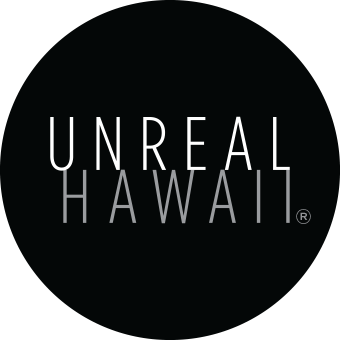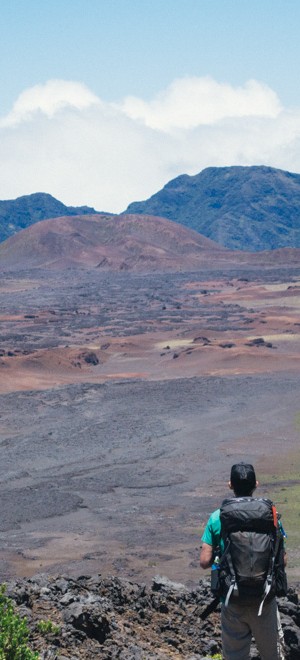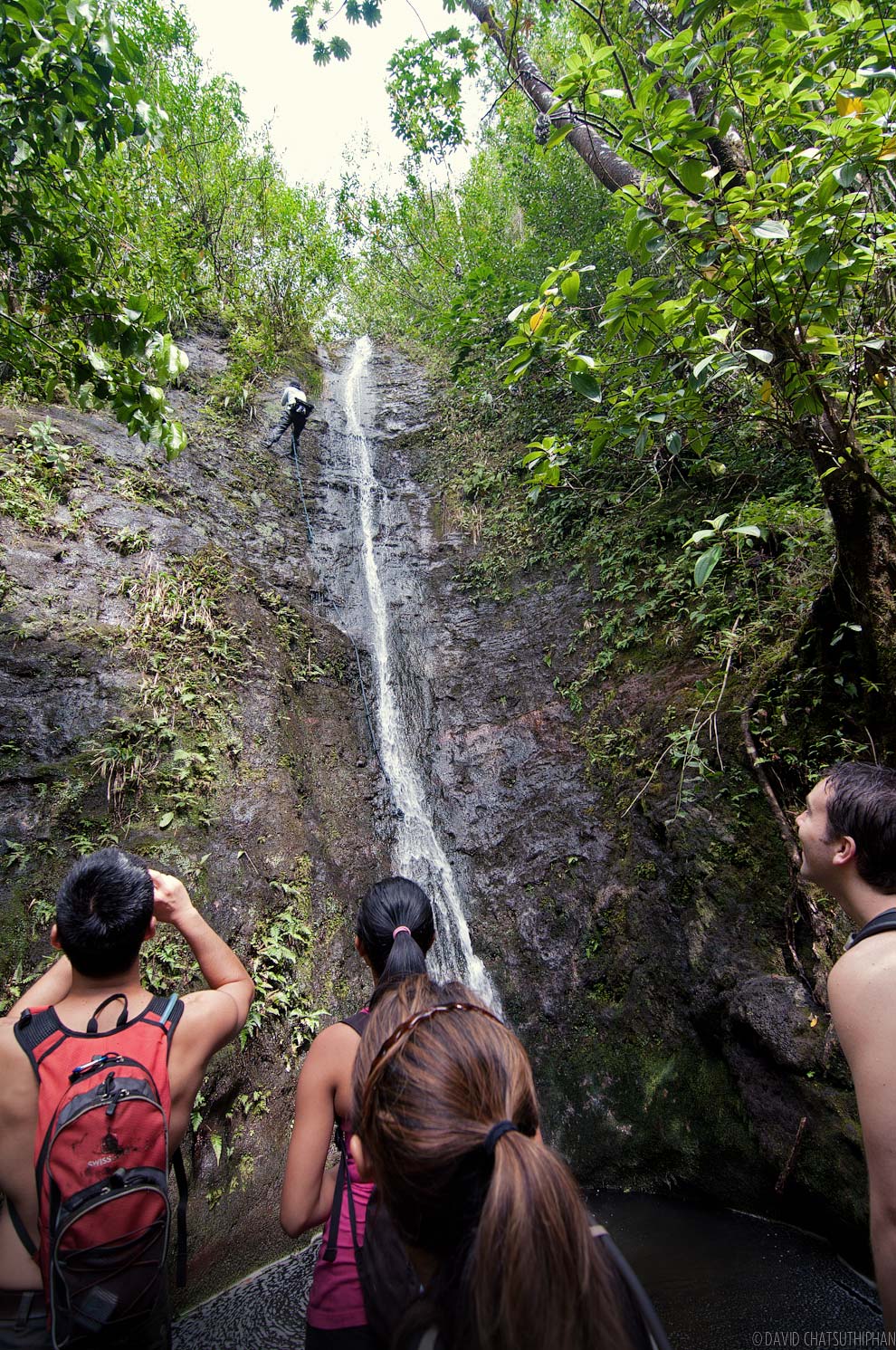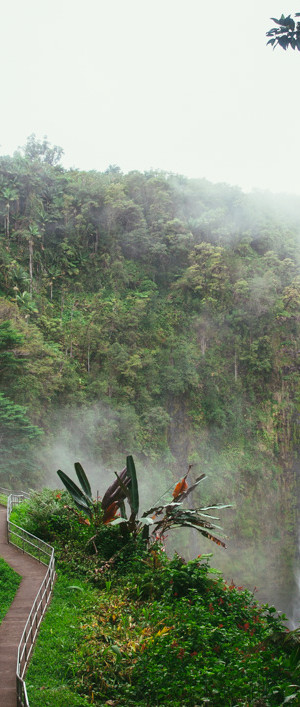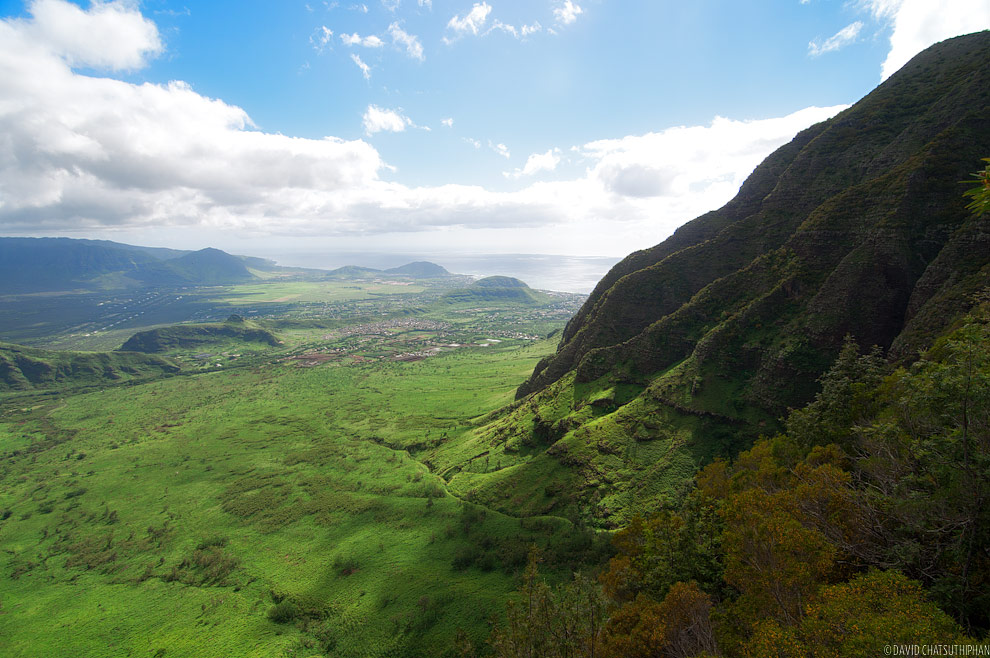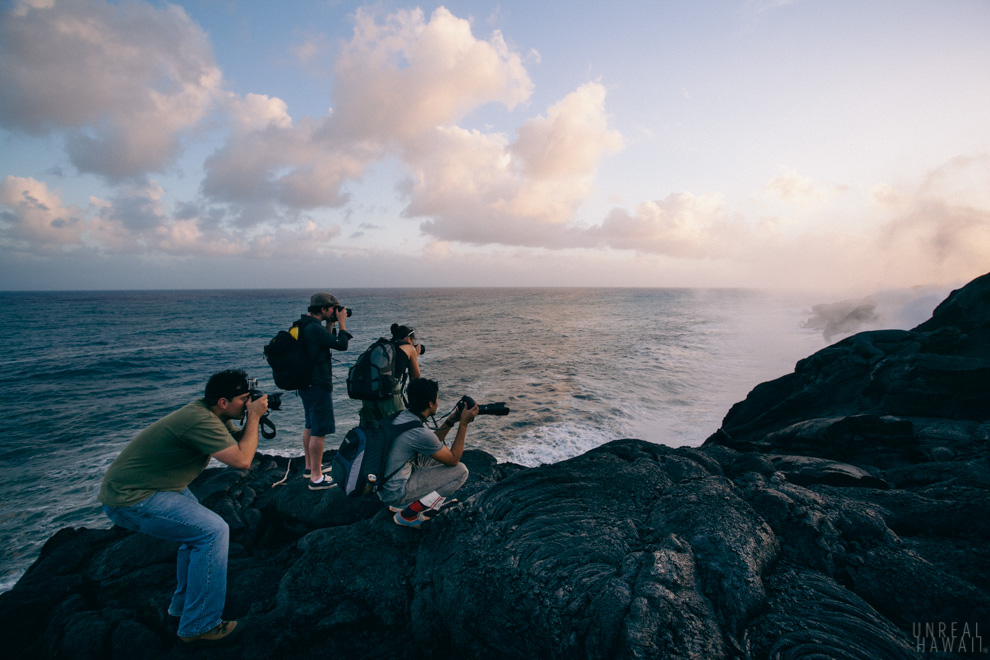
A few weeks ago, I went on a trip to Big Island with a group of Hawaii photographers.
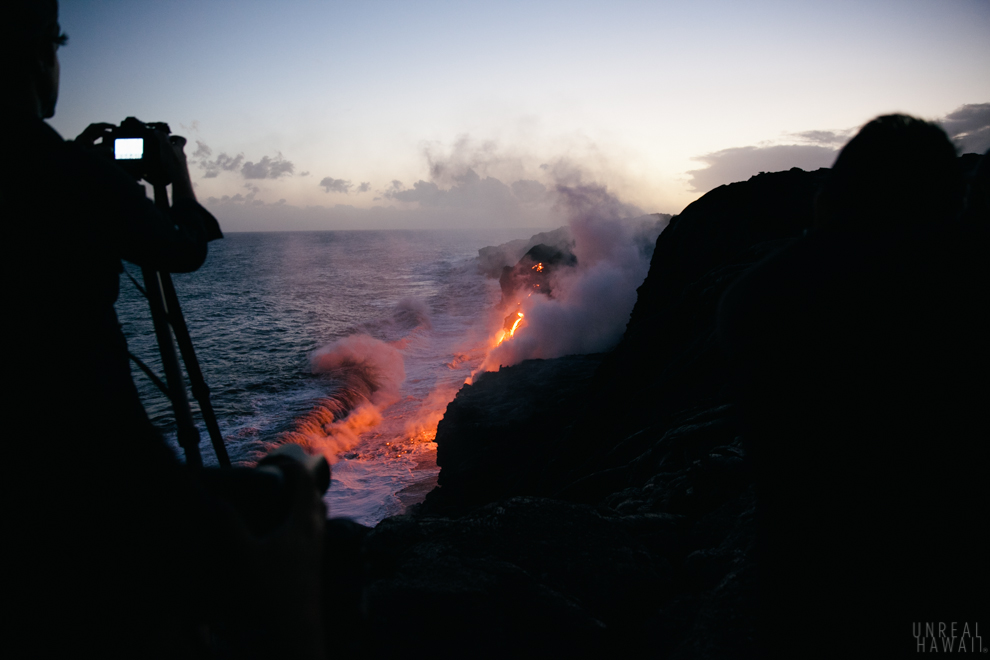
One of the photographers in our group, Dallas Nagata White, organized a private tour for us from the good folks at Kalapana Cultural Tours.

For the last couple months on the Big Island of Hawaii, the lava has been flowing into the ocean providing some unreal views.
This was the second day of our short trip to Big Island. On the first, we spent the night before braving freezing cold temperatures some 10,000 feet above sea level stargazing on Mauna Kea. On this evening we would be standing next to scorching hot Hawaii lava trying to keep our shoes from melting.
There are very few places on Earth where you can see lava in person. And even fewer where you can walk right up to it. Kalapana on the Big Island of Hawaii is the safest and easiest to access of these locations.
Remember though that no one is entitled to see lava when they come here. The location of the lava flow and amount of visible lava changes daily. If you do get to see flowing lava, you should consider yourself pretty lucky. You can however get an idea of how much lava there is by checking out the Hawaii lava status report on the Kalapana Cultural Tours Blog.

We started the day at our condo rental in Kona, the Kona Bali Kai. Sam took a photo of our view with an old Polaroid camera she got from a swap meet.
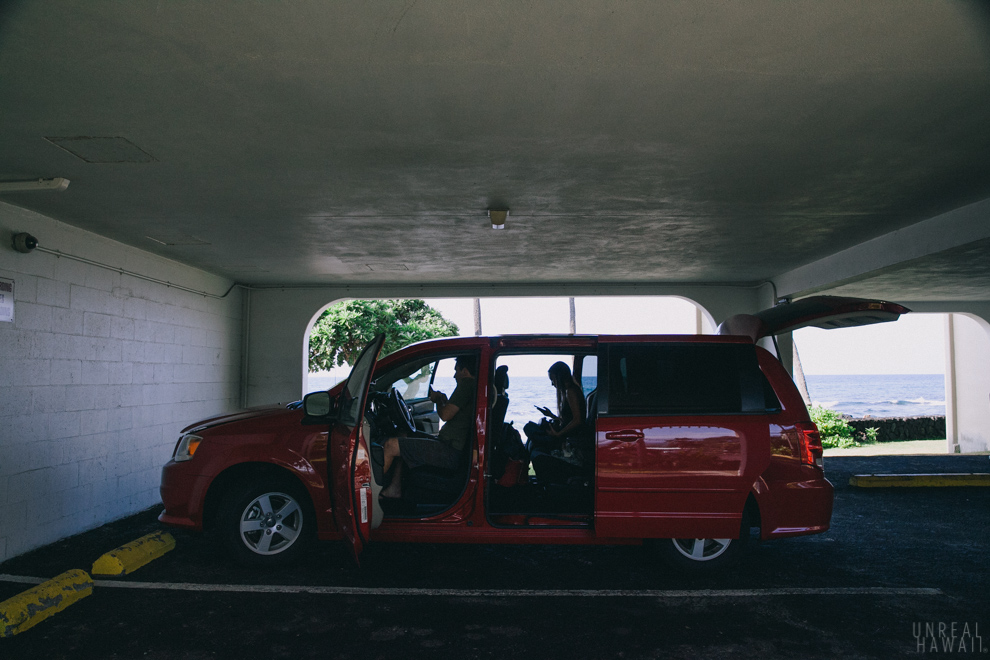
We piled into our baller minivan.
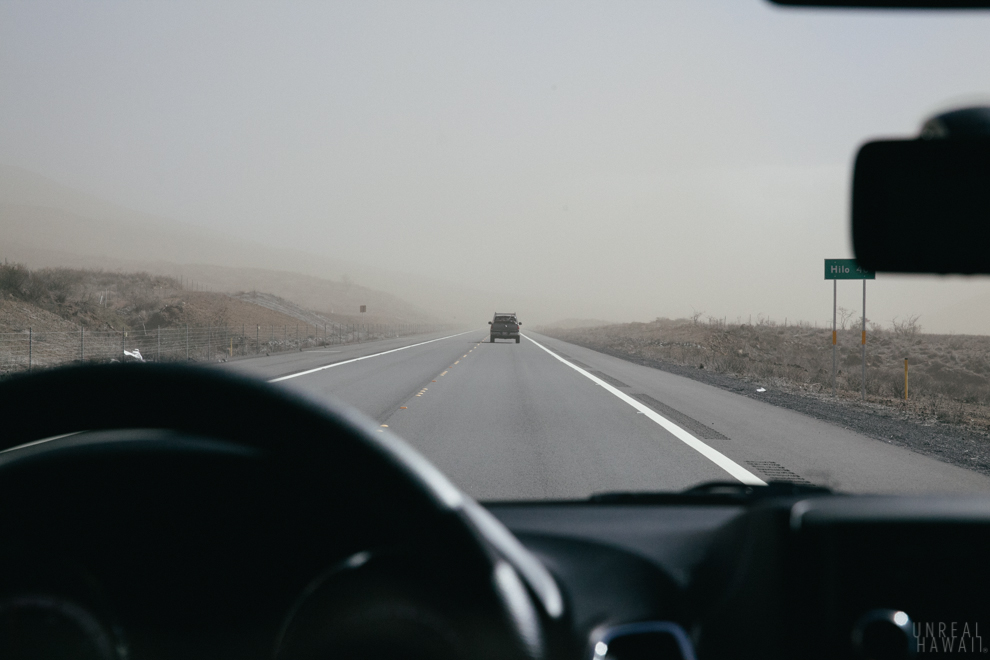
The drive from Kona to Hilo is about two hours.

During that time you pass through scenery that is totally different than what you would see in magazine ads for Hawaii. Here we see cinder cones reminiscent of what you see in Haleakala Crater.

During the long drive, the two Nikon guys Tom and John talked shop.

We eventually got to our hotel in Hilo, the Hilo Hawaiian Hotel.
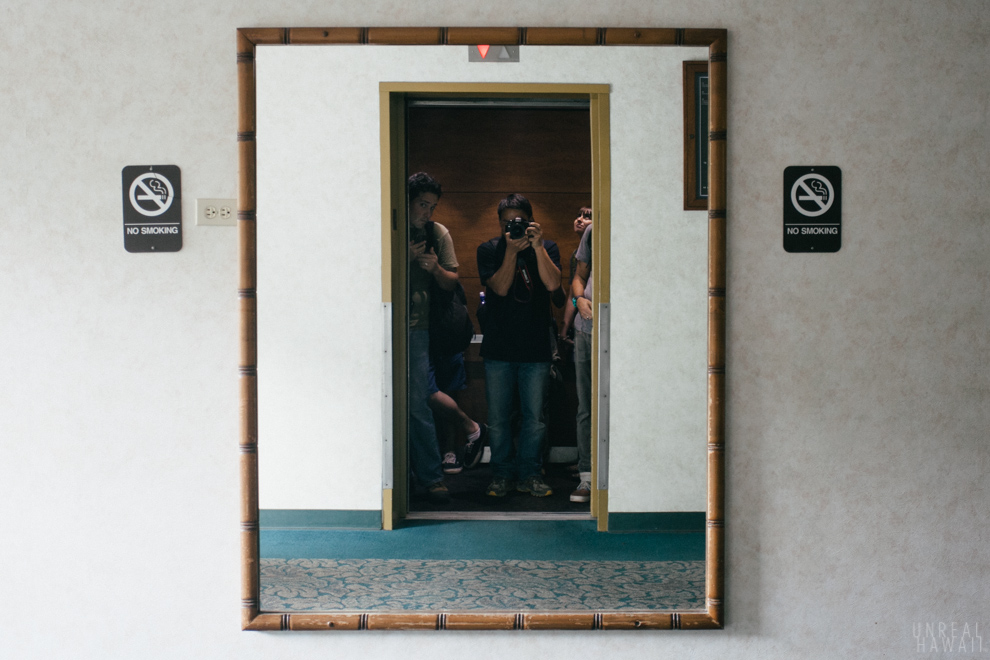
After checking in we quickly packed up our camera gear and headed out. From Hilo, we had to drive about an hour south, down to Kalapana.

When you arrive in Kalapana you’ll be standing on the freshest earth you’ve ever set foot on.

This is the check-in booth (the one with the guys with red shirts) to Kalapana Cultural Tours.

From the booth, we were shuttled to the trailhead.

This is our guide Andrew. Kalapana Cultural Tour guides really hook you up. Not only do they get you across the fields of lava safely but they carry water, ponchos and flashlights for everyone. And if you talk to them you’ll realize they got plenty jokes as well.

As you hike across the fields of lava remember this, Kalapana used to be home to a fishing village. In 1986, lava started flowing out of the KÄ«lauea volcano toward the town and ended up destroying it. The lava continues to flow to this day and the town is now completely buried.
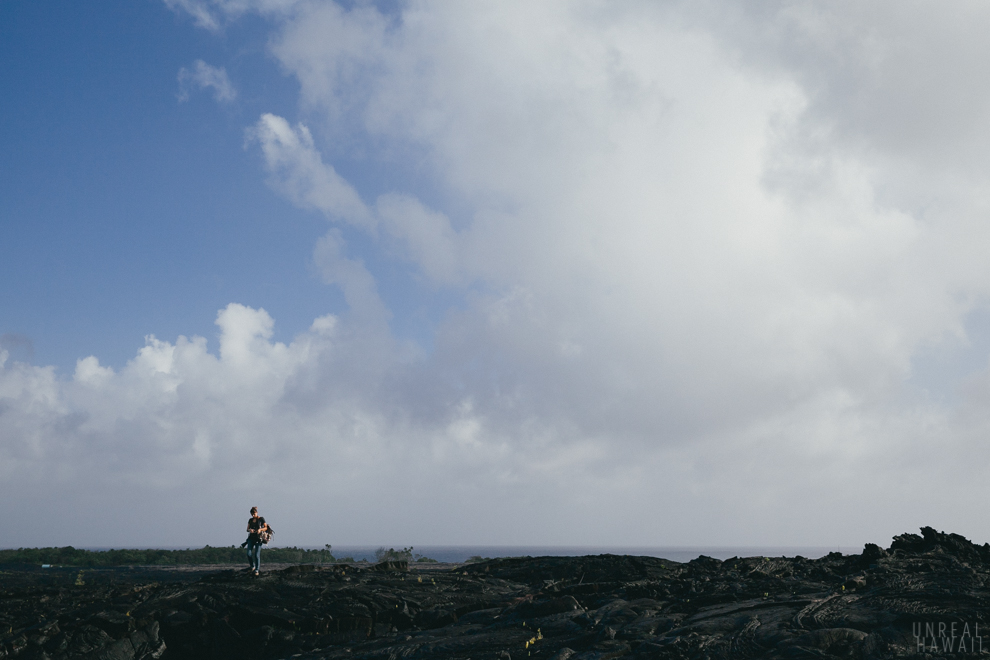
So as you’re having fun hiking just remember that a this is not a playground or a place to mess around. It’s a historical site and reverence should be had for the residents that lost their homes. For me, seeing the lava fields is also a reminder of the unstoppable force of nature.

The lava hardens so fast that the rock still looks like it’s in motion.

As the lava hardens it often cracks forming these deep crevices you must watch out for. These become harder to see when it’s dark so you really gotta watch your step at night.
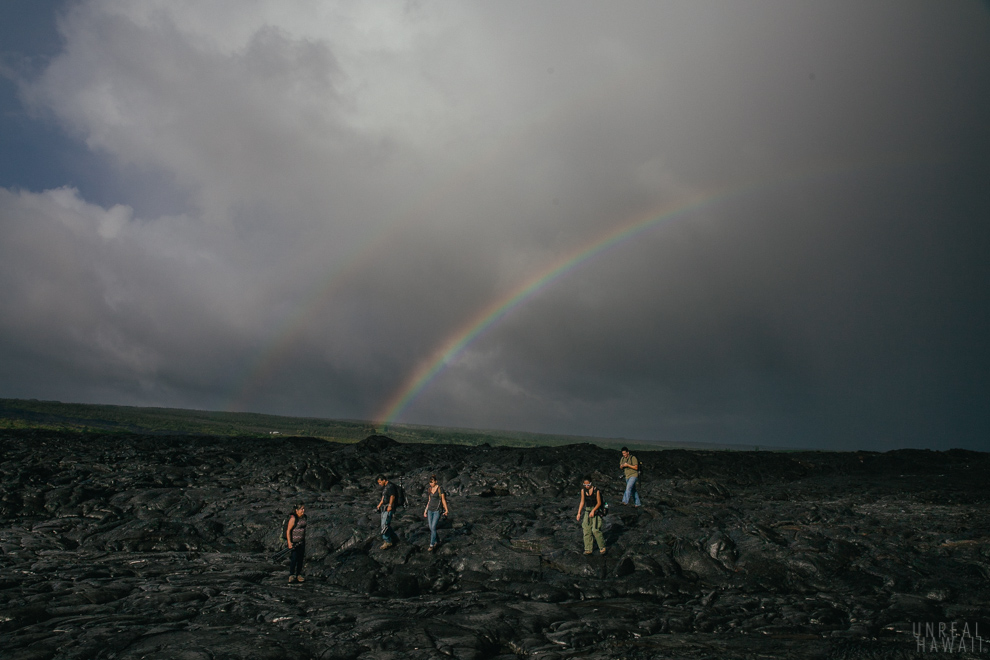
As we hiked a squall approached from the east forming rainbows.
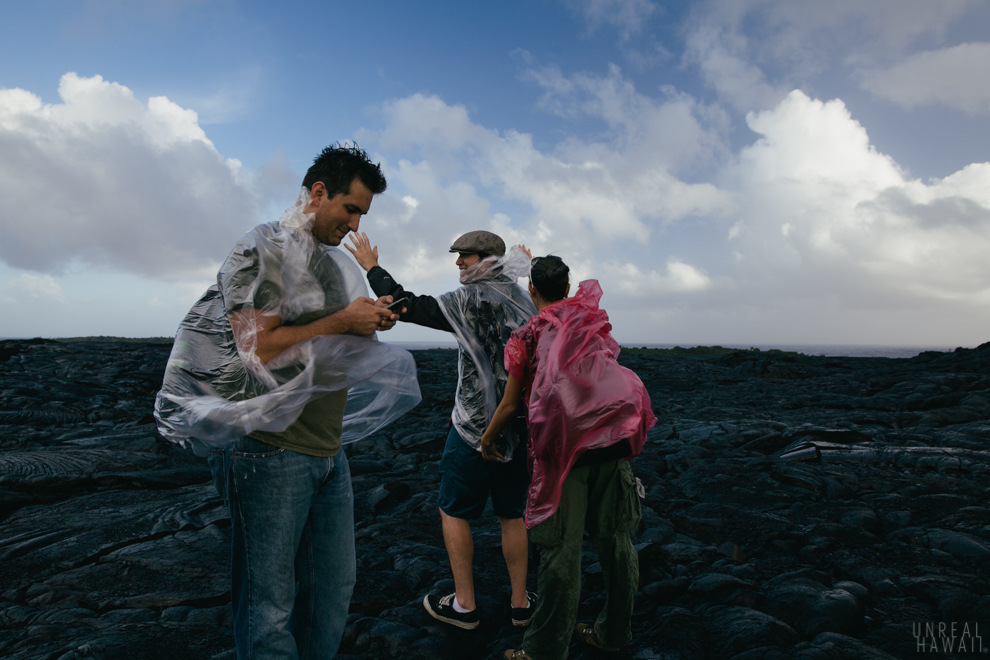
Our guide passed out ponchos, and we got to watch everyone try to put them on in the wind.
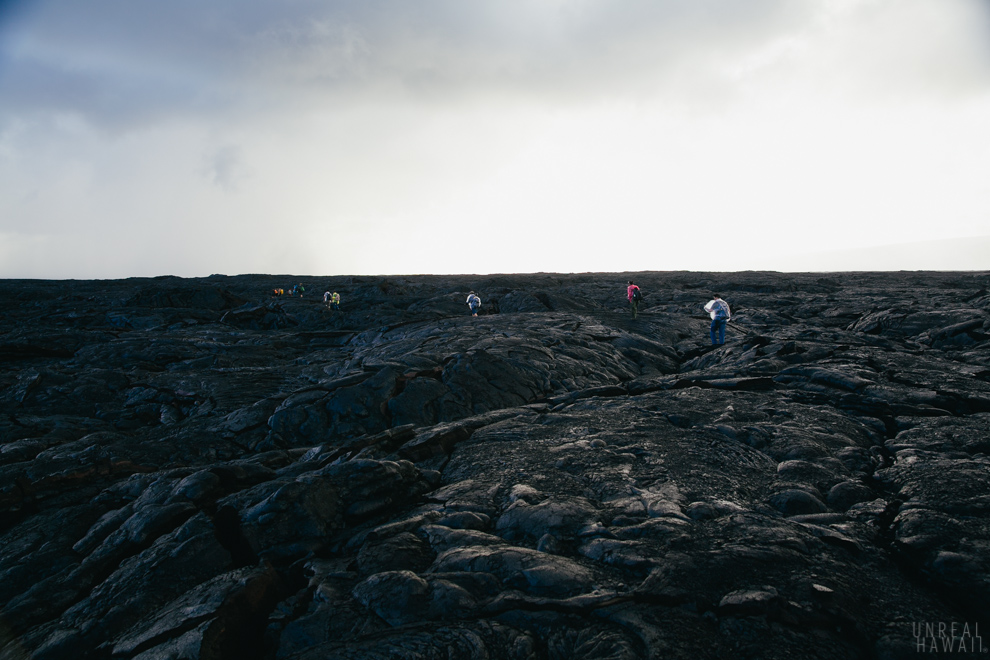
The lava was about 2 miles from the trailhead on this day. That distance changes daily.
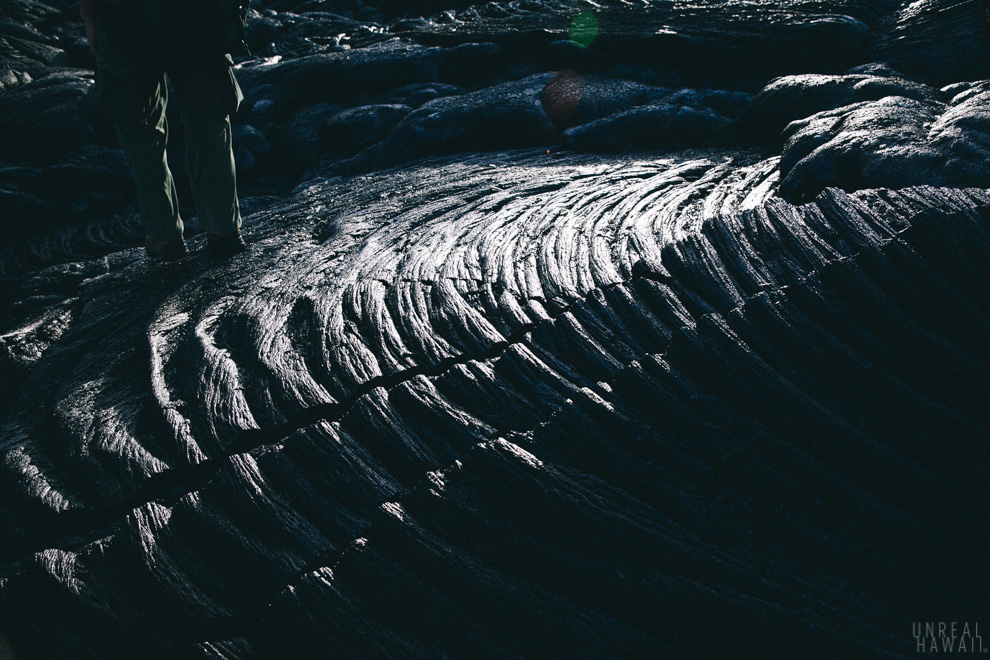
The ground we were standing on here, we were told, was a day old. It was super crunchy under our shoes.
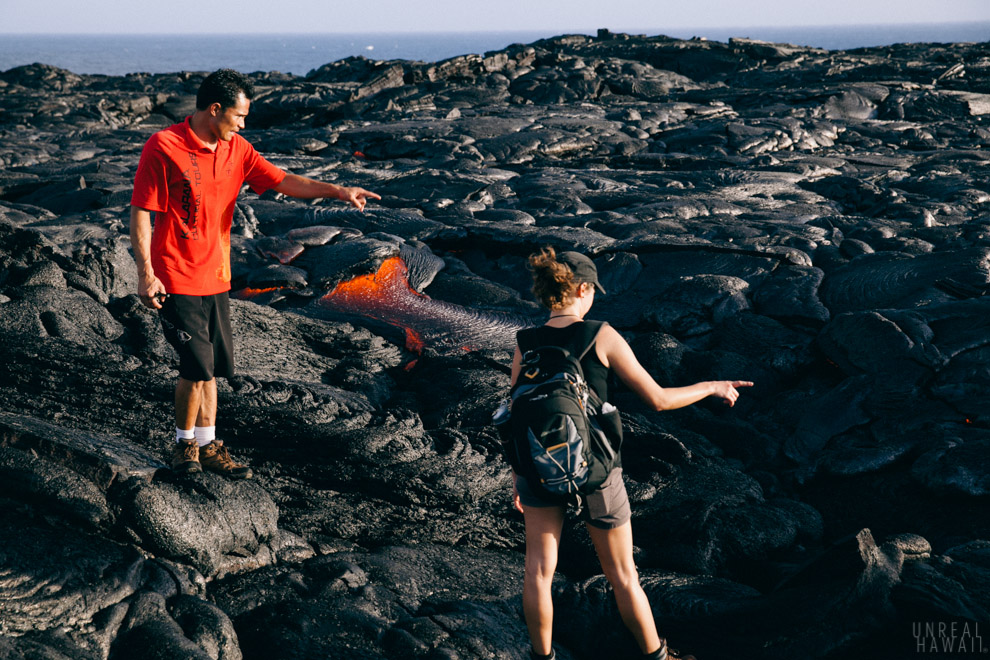
The lava sneaks up on you when you are hiking. Had we not had our guide, it would have been easy to walk right into it. With the wind blowing hard, you couldn’t feel the heat until you were right next to it.

Mind = blown.

Like clouds, you could see all types of things in the liquid rock.

Ed decided to get close to singe off some pesky knuckle hairs. He’s snapping a frame of the lava glowing through small cracks as it hardens. Here’s the photo.

John gets low for a shot with his Nikkor 70-200mm lens.

It’s not just the red stuff that’s hot by the way. The silvery rock around it was red hot just a few minutes ago so it’s still hot enough to burn your feet off.
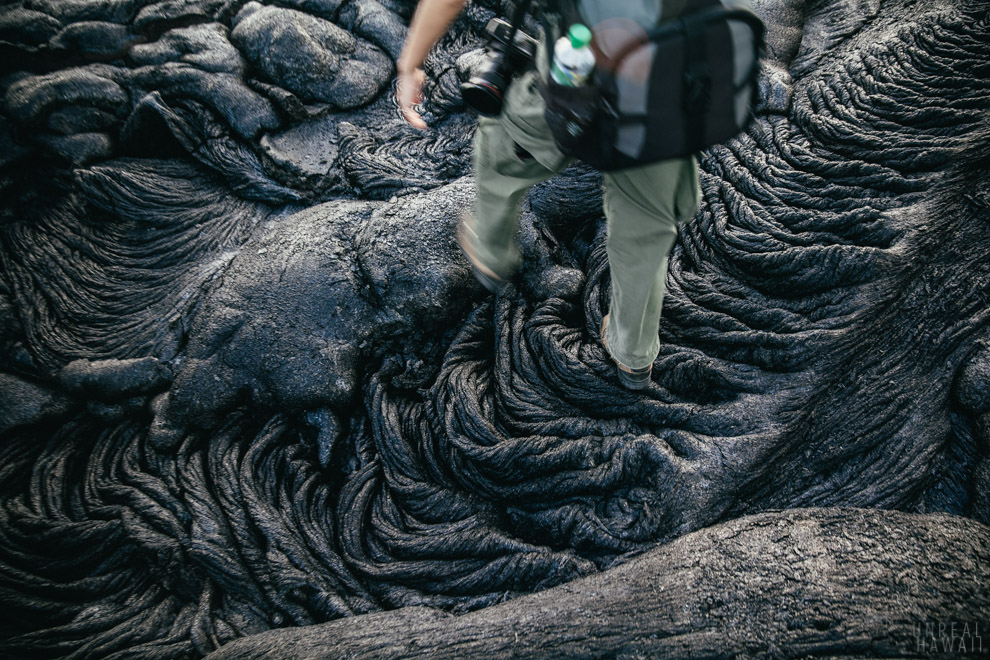
After a spending time looking at the surface flow lava we moved on.

Our main destination was the “ocean entry.” We could see the steam coming from the ocean.

We walked toward the cliff not knowing what to expect.

When we got to the edge our jaws dropped.

This was our view.
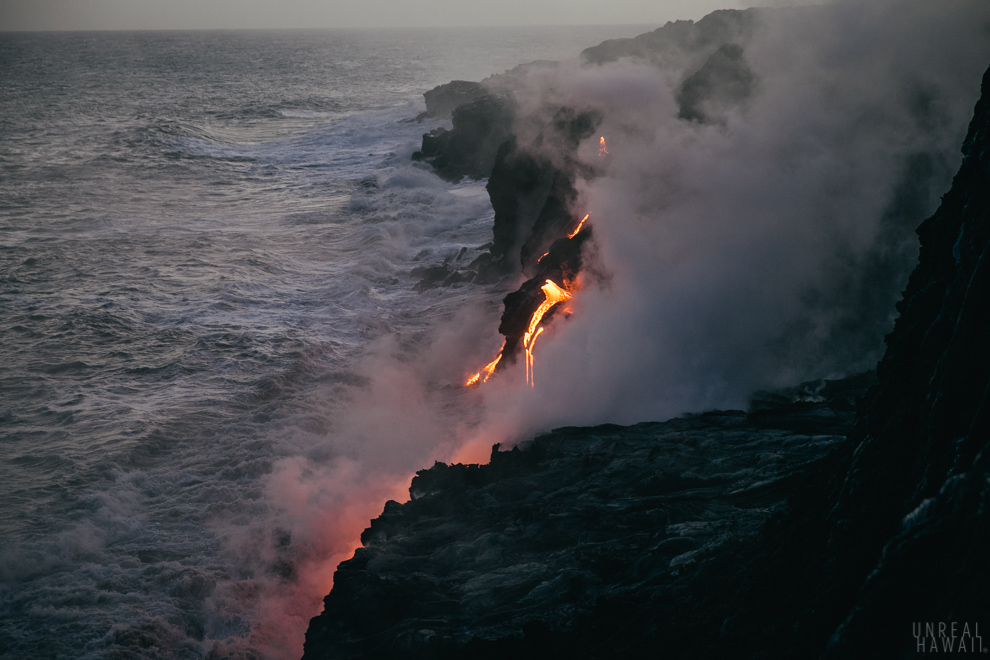
The ocean was rough this day and wave upon wave crashed into the cliff. Each time a wave crashed a huge plume of steam would engulf the rocks.
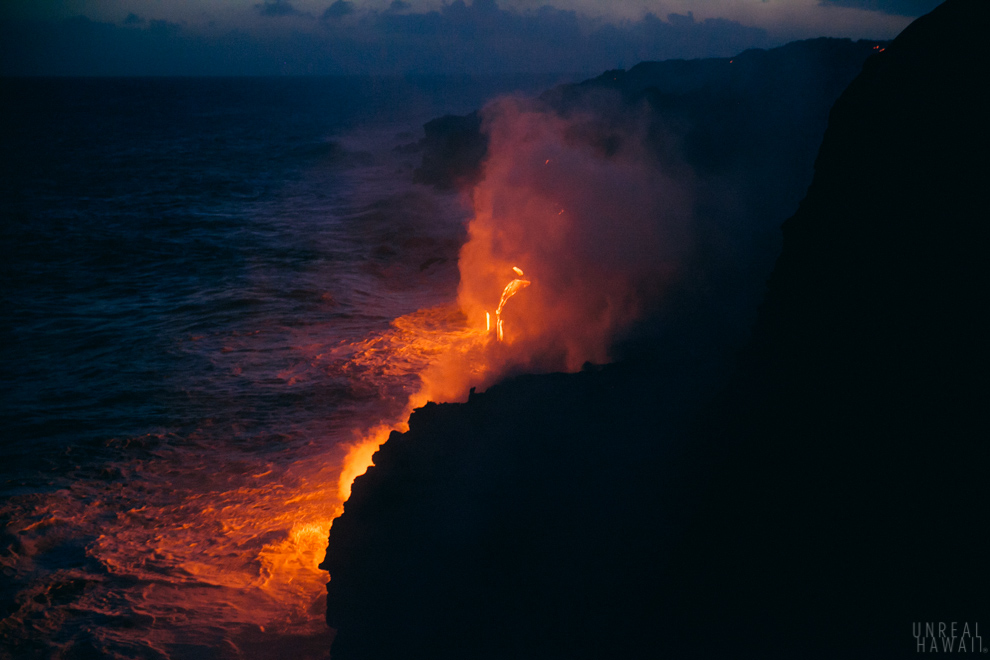
As the sun went down the colors became deeper.
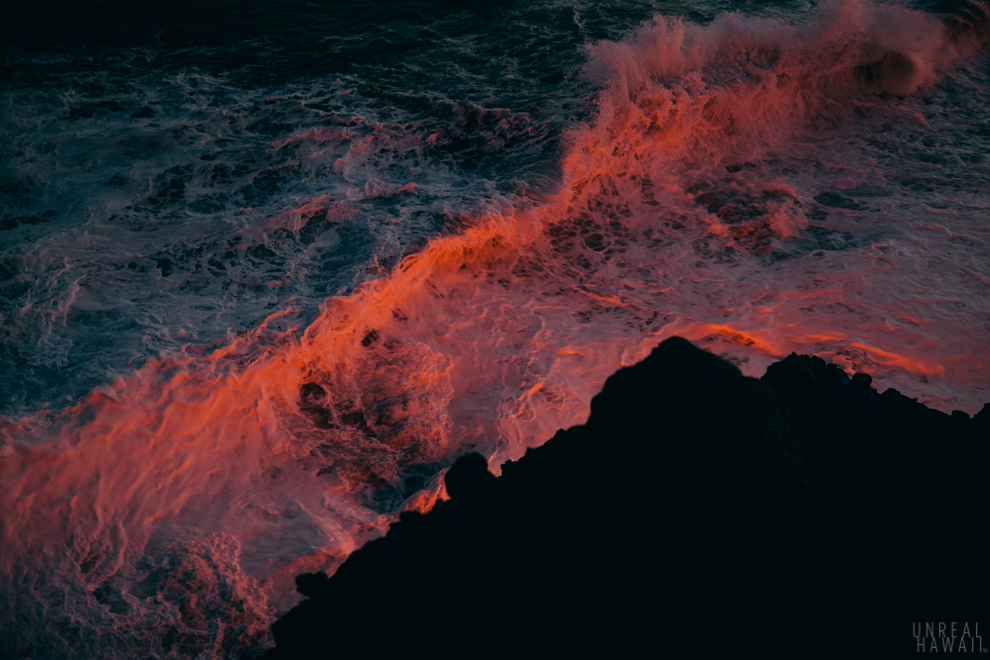
The waves glowed red.

The lava appeared to be flowing stronger later in the evening.
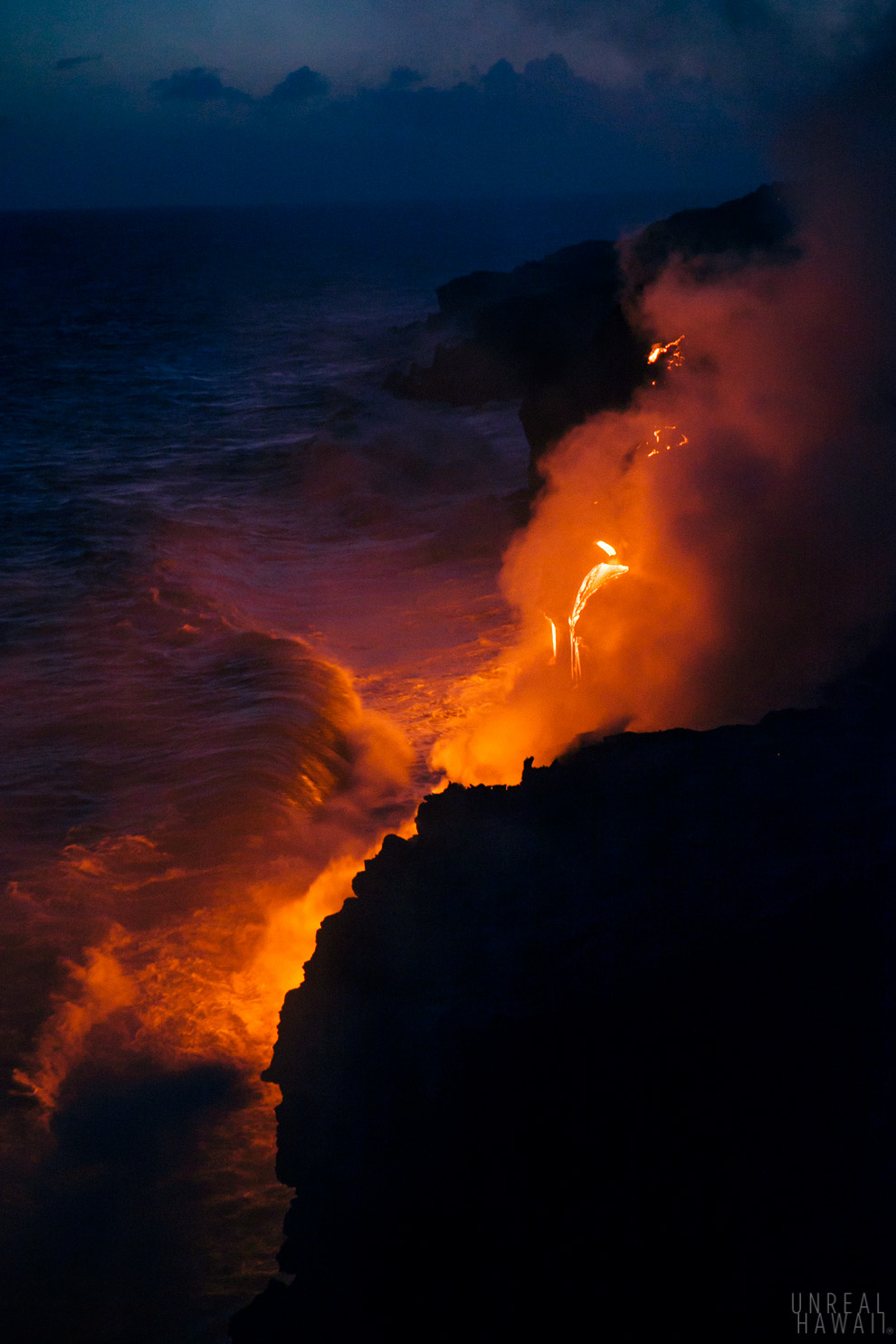
We watched as more and more lava flowed into the ocean.
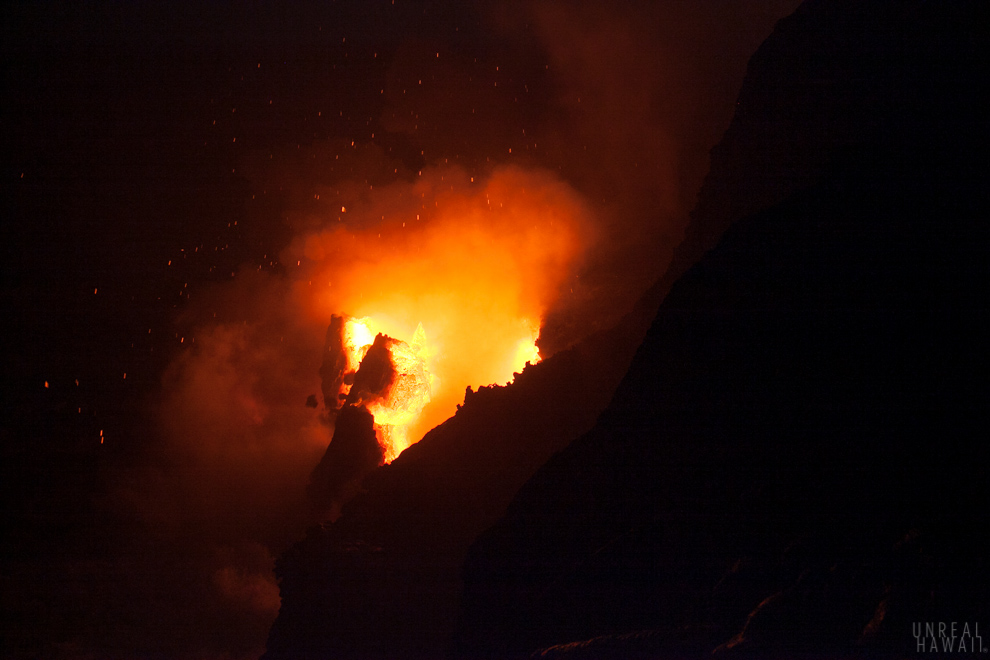
And then this happened. With a huge crackling and roaring sound, the earth opened up. We then heard a loud whooshing sound as the heat created an immense amount of steam.
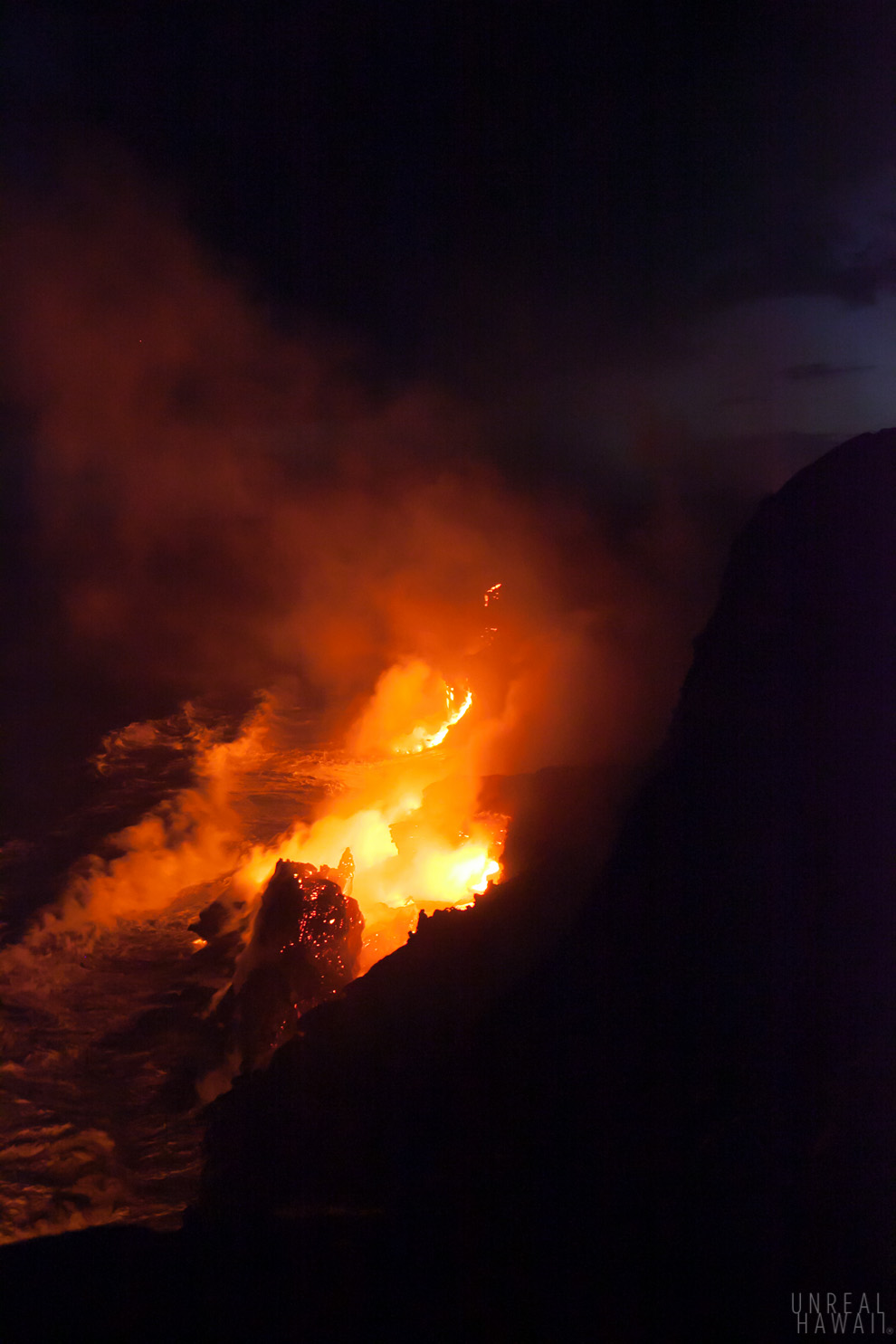
A chunk of the cliff the size of the three story townhouse I used to live in back in San Diego broke off revealing a pocket of magma.
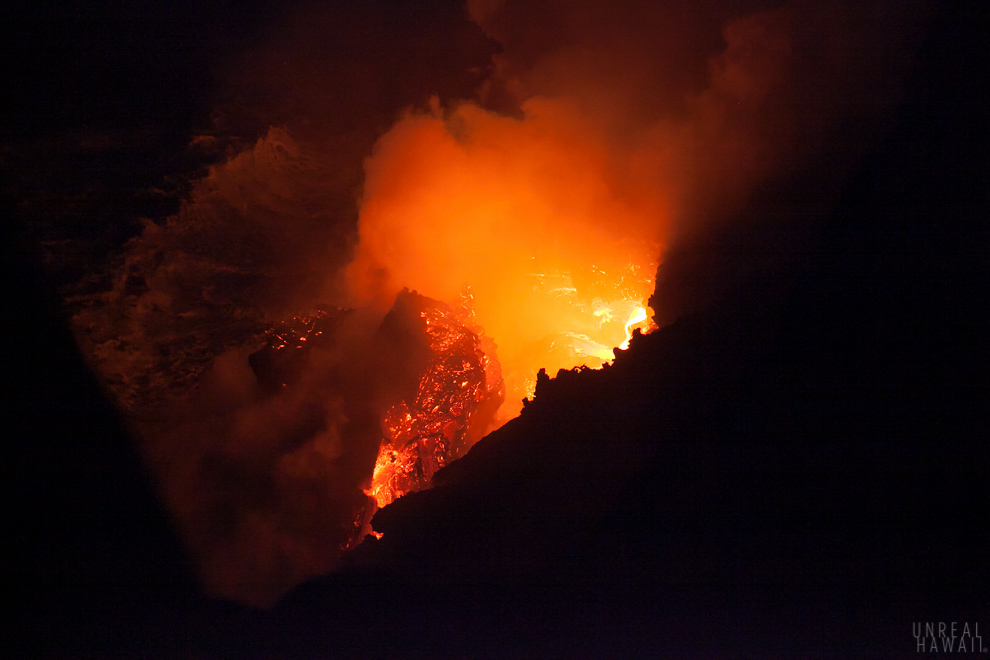
It was intense. Definitely one of the best “earth porn” viewing experiences of my life.

As we were taking photos of the lava, one of our tourmates Laura took some iPhone photos of Tom silhouetted against the glowing red steam. She showed us her photos and (once again) our jaws dropped. Then we all asked Tom to pose up on the cliff for us.
One of the standouts was Tom’s photo of Ed and Dallas (husband/wife). You can view it here.

When we had finally taken all the photos we could possibly take, our guide Andrew lead us to see more of the surface flow.
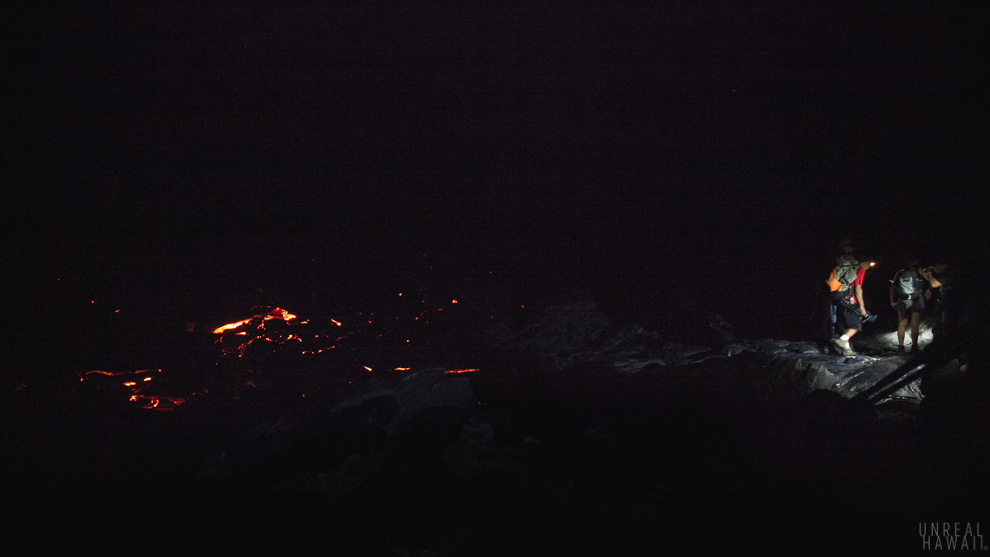
You can see the surface flow glow bright red at night. This, for me, was the most intense part of the tour. Walking around in the dark surrounded by lava is unsettling. The air is hot all around you. You can feel the heat coming up through the soles of your shoes. A few times, as we stepped over cracks we could see a red glow and feel heat coming up through the cracks. Every step we took we could hear the brittle new earth crumble beneath our feet. It was like walking on glass.
Luckily, we had our guide.
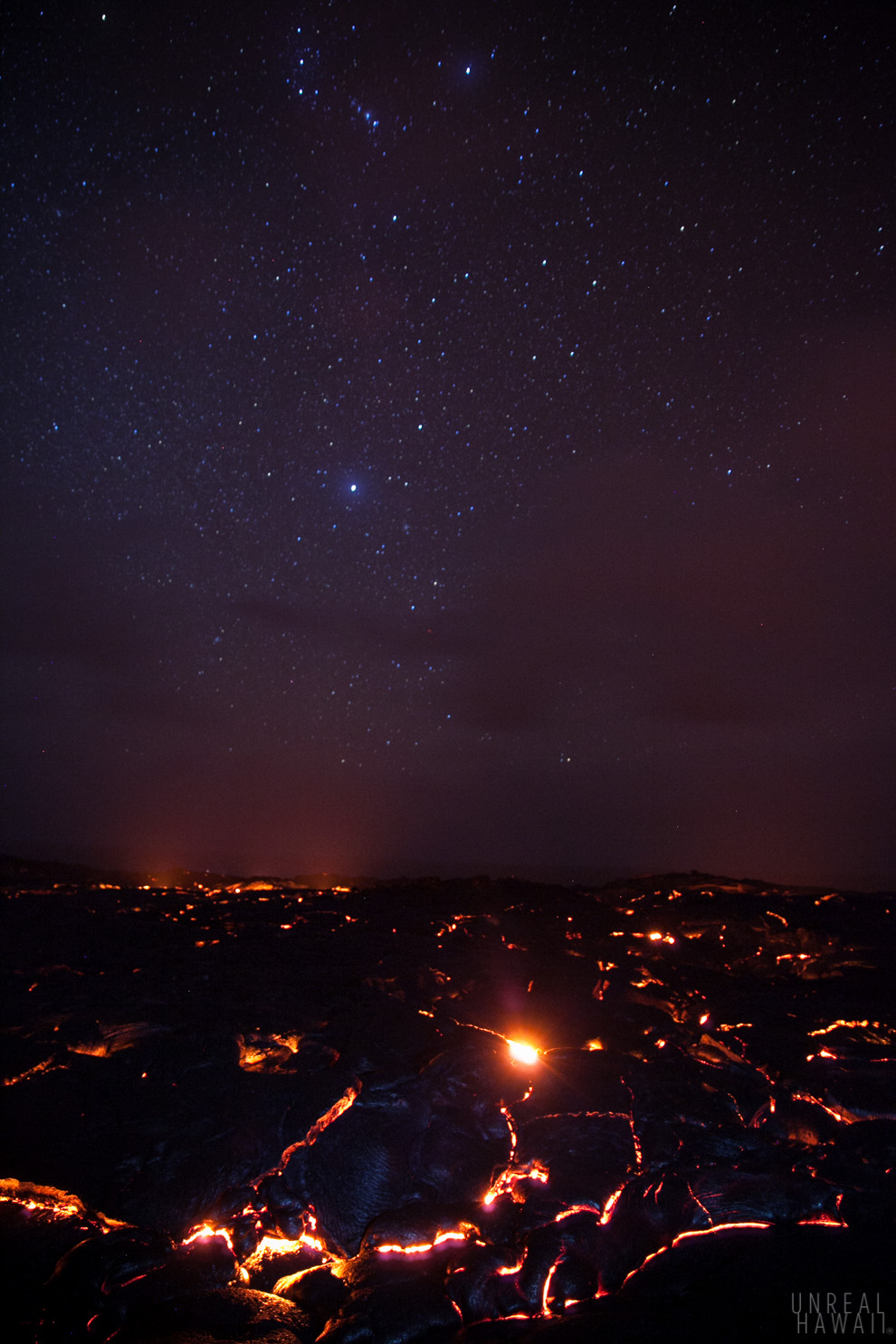
I’m not sure how many places on Earth you can see lava under the stars like this. If you want the stars in your photo you’ll need to do a long exposure and have a good tripod.

We then walked back to the cliffs to see a the ocean entry from another angle. From this vantage point you could see the glowing lava dripping into the ocean.

As we made our way back out of the lava field we passed by one more section of surface flow. A large blob of lava was seeping out of the ground.
We then hiked back to the trailhead following the lead of our guide. It was a good hour or so of hiking over rough terrain in the dark. If you want to do this type of extreme lava tour, you should be in decent physical shape.
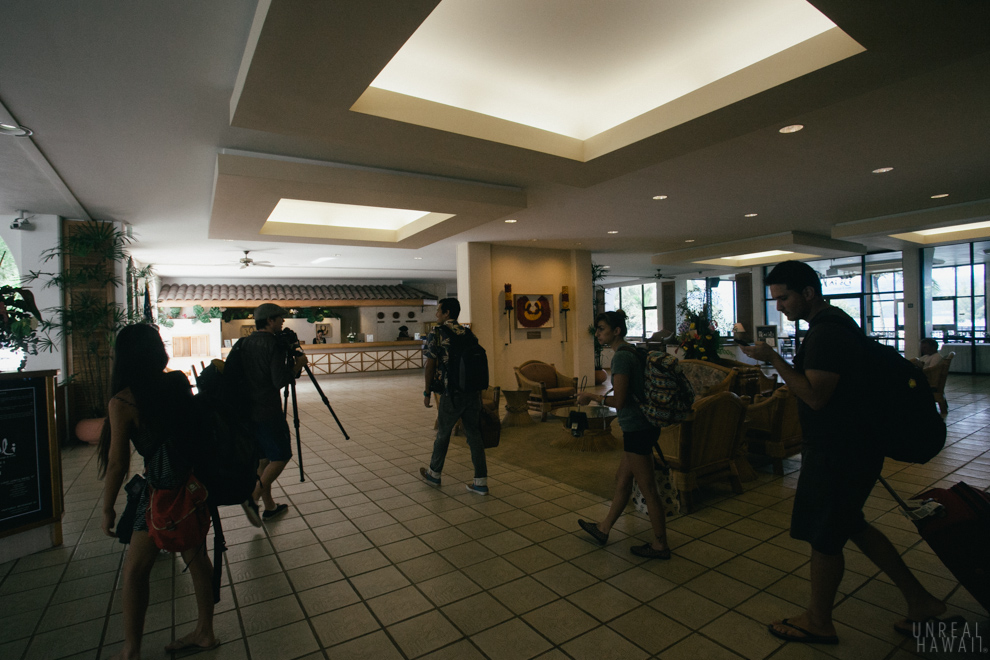
We slept well that night. Everyone was tired from a full day of driving and adventuring. The next morning we woke up and checked out.
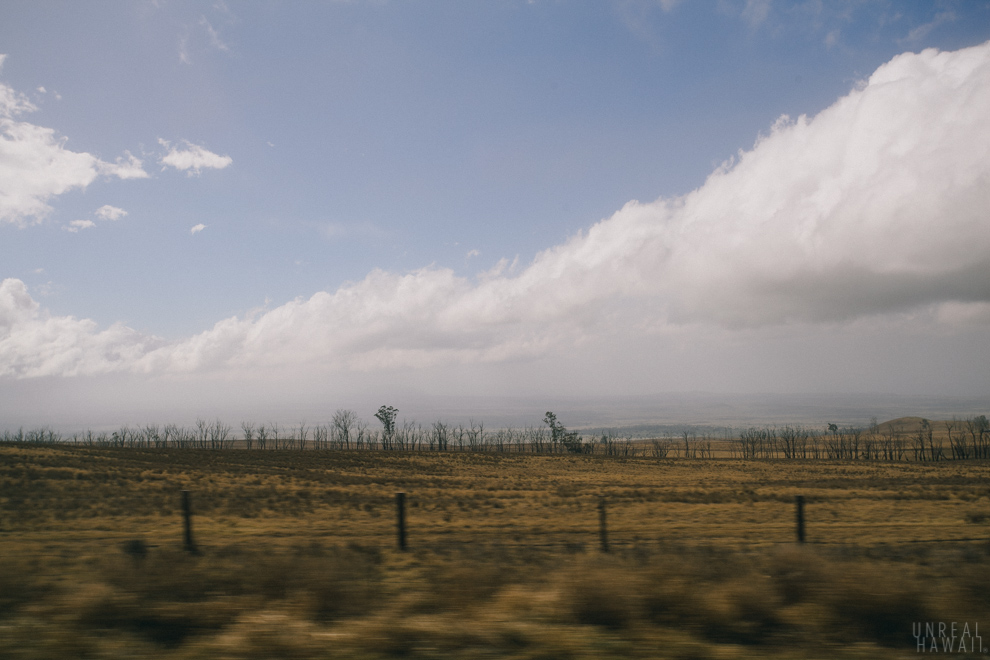
As we drove to the Kona airport we realized we should have flown out of Hilo. But there were nice Big Island views to be had on the way.
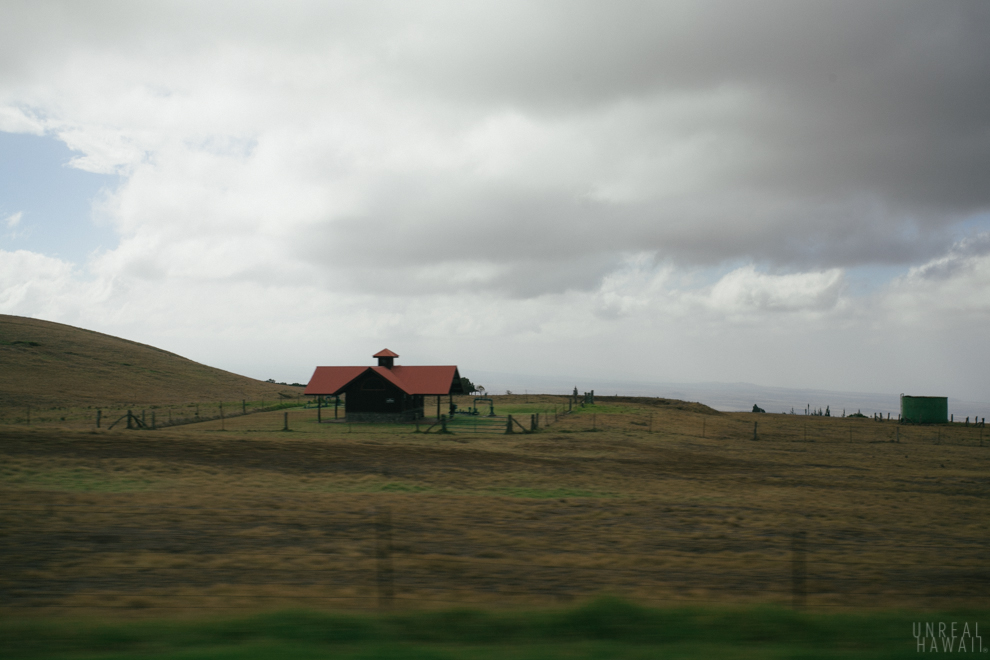
Much of the land here is rural.

And then we flew back to Honolulu.
Travel Companions: When I went through my photos from this trip I noticed I had a photo of each of my photographer travel companions in action.

Ed White. (Instagram.com/spyhi)
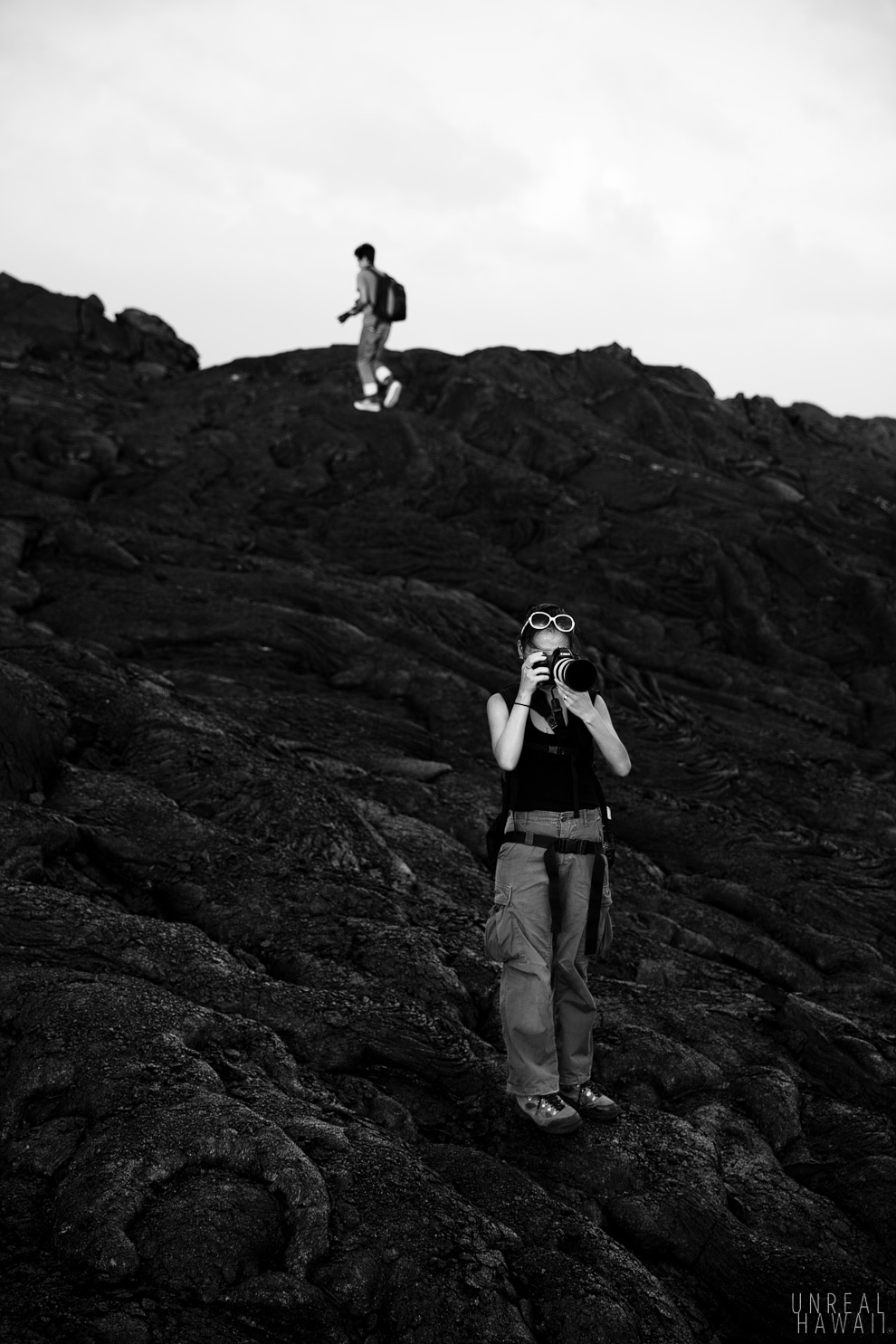
Dallas Nagata White. (www.dallasnagatawhite.com)

Tom Anderson. (Instagram.com/myspacetom)
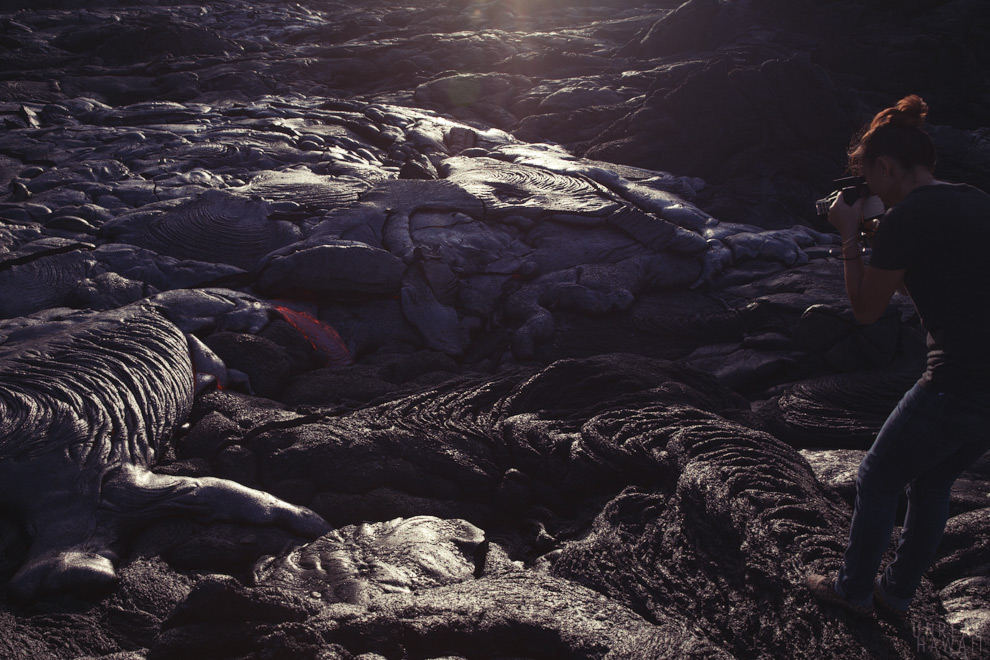
Samantha Hook. (Instagram.com/sticksxstonesjewelry)

John Hook. (JohnHookPhoto.com)
See also:
- To do this guided lava hike, contact Kalapana Cultural Tours.
- See the Hawaii lava photos of Lava Light Galleries.
